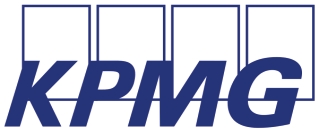Carbon Revolution Public Limited Company
Directors’ report(continued)
Dividends
There were no dividends during the 2024 or 2023 financial years.
Research and development
The Group was involved in research and development activities and during the year incurred $5.8 million in development costs that were capitalised and a further $17.0 million of research costs that were expensed. Capitalised developments costs were fully impaired during the financial year.
Directors of the company
The directors, who held office at any time during the year, were as follows:
Robert A. Lutz, Chair of the board (appointed November 3, 2023)
Jacqueline Dedo (appointed November 3, 2023)
Burt Jordan (appointed November 3, 2023)
Chris Leary (appointed February 23, 2024)
Jonathan Magaziner (appointed February 23, 2024)
Matti Masanovich (appointed November 3, 2023)
Dale McKee (appointed November 3, 2023)
Donald Hampton, Jr. (appointed March 19, 2025)
Jake Dingle (resigned March 19, 2025)
James Campbell Douglas (appointed November 3, 2023, resigned February 21, 2024)
Lucia Estana Cade (appointed November 3, 2023, resigned February 21, 2024)
Mark William Bernhard (appointed November 3, 2023, resigned February 21, 2024)
Rolando Ebuna (resigned November 3, 2023)
Ronan Donohoe (resigned November 3, 2023)
The directors and secretary who held office at 30 June, 2024 had 30,952 ordinary shares of the company or other group companies (2023: Nil).
Political donations
The company did not make any political donations (2023: $Nil) disclosable in accordance with the Electoral Act, 1997.
Charitable donations
During the year the company made a charitable donation of $nil (2023: $nil).
Going Concern
The going concern basis of preparation assumes that the Group will continue in operation one year after the date these consolidated financial statements are issued and will be able to realize assets and discharge liabilities and commitments in the normal course of business. The consolidated financial statements do not include any adjustments to the carrying amounts and classification of assets, liabilities, and reported revenue and expenses that may be necessary if these financial statements were prepared on an alternative basis, which would be required in the event that the Group is unable to continue as a going concern.
The Group has incurred losses since inception, incurred a consolidated net loss of $221.1 million, $118.5 million before impairment (2023: $79.2 million) and used $76.8 million (2023: $52.5 million) of cash in operating activities during the year ended June 30, 2024 and has a consolidated net current liability position at June 30, 2024 of $9.6 million (2023: consolidated net current asset position: $25.9 million).
The Group expects to continue to incur net losses and negative cash flows from operating activities in accordance with its operating plan over the next twelve months from signing date. However, the Group expects that unit



